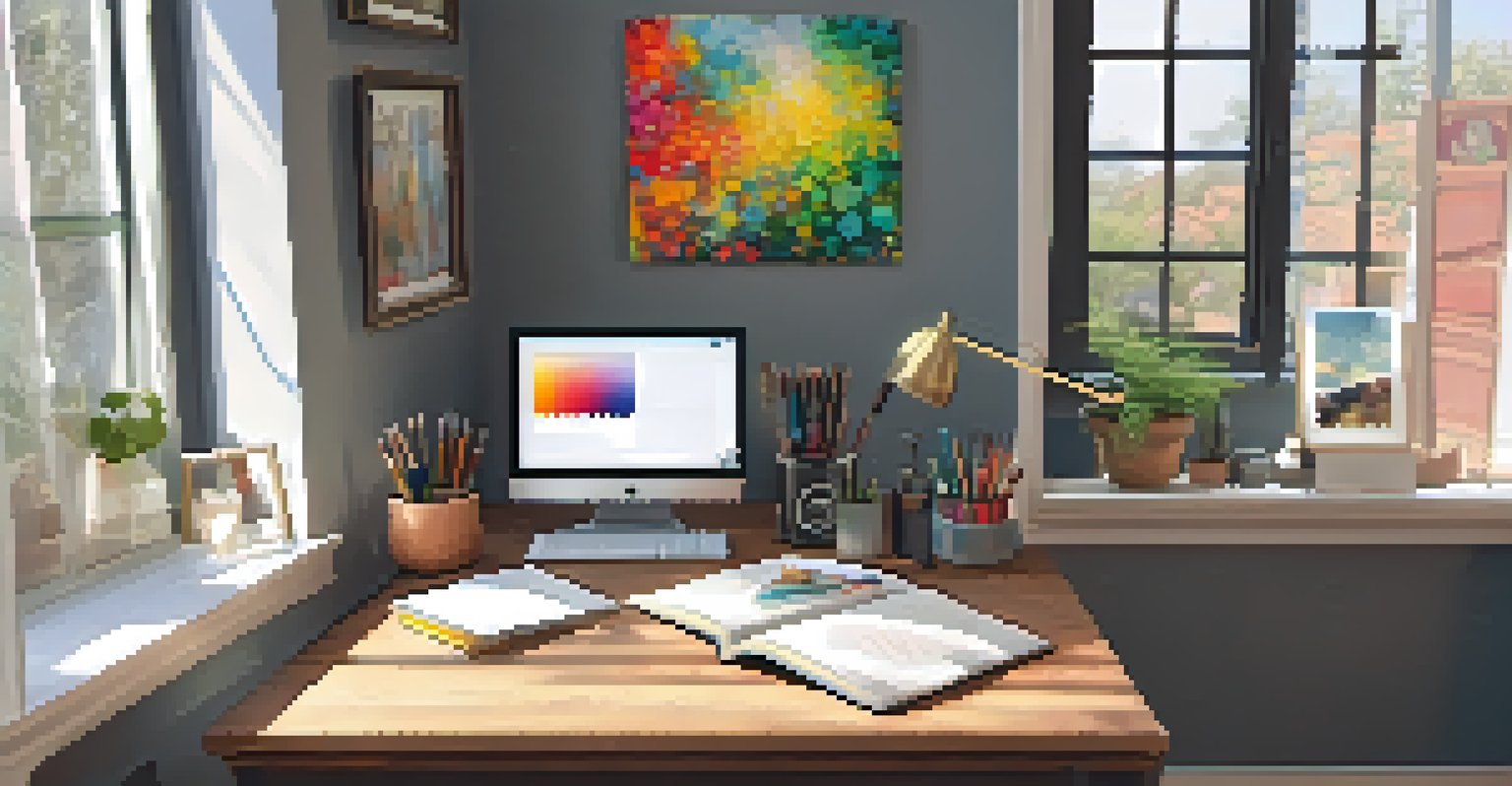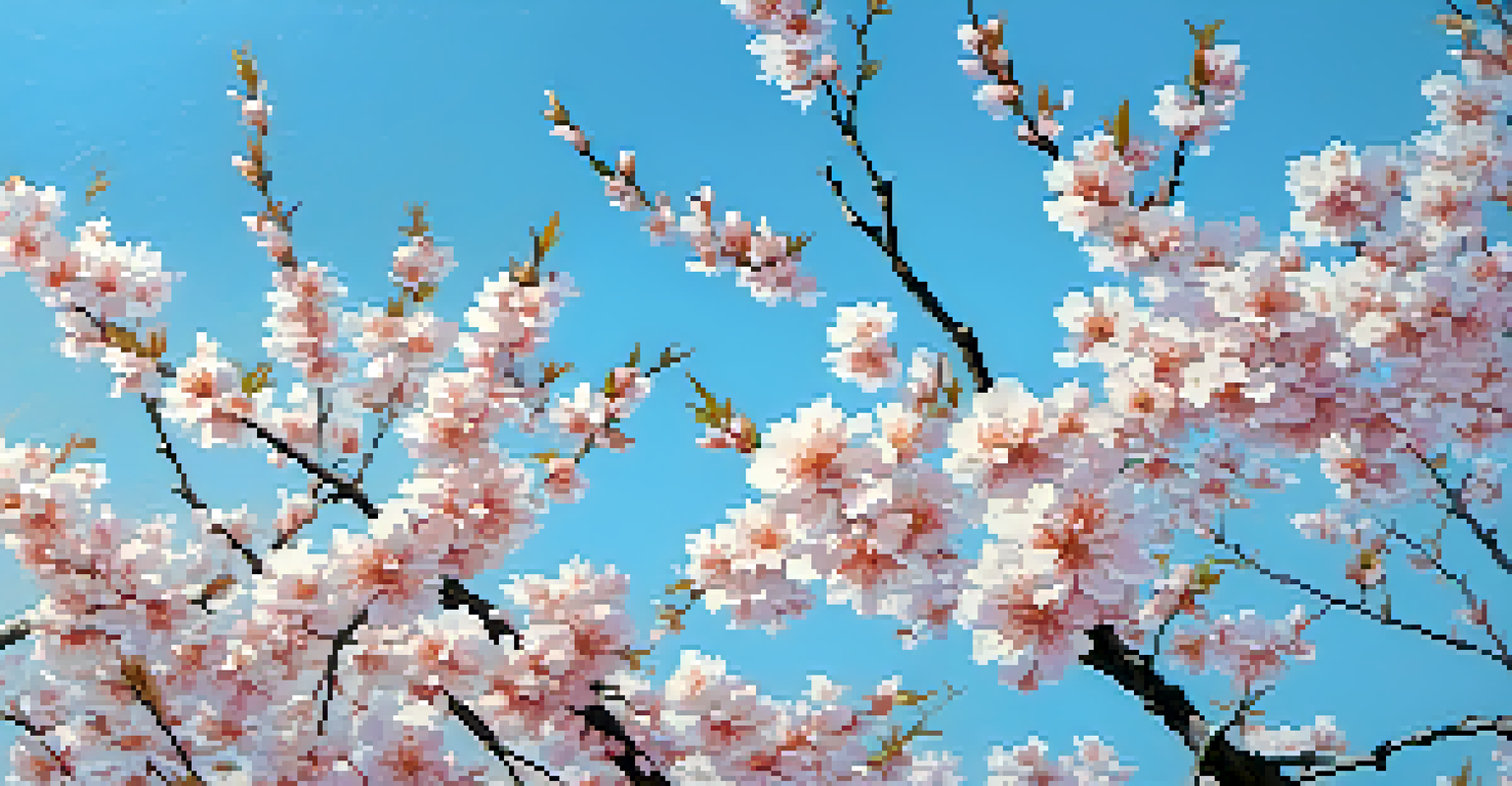Copyright Basics: Protecting Artistic Works and Designs

Understanding Copyright: What It Is and Why It Matters
Copyright is a legal framework that protects original works of authorship, giving creators exclusive rights to their creations. This includes everything from music and literature to visual arts and software. By understanding copyright, artists can safeguard their intellectual property and ensure they receive credit and compensation for their work.
Copyright is not just a legal issue; it's a way to protect your creativity and livelihood.
Imagine spending hours crafting a beautiful painting only to find someone else selling prints of it without your permission. This is where copyright steps in, providing the legal backing to defend your creations. Without it, the risk of theft and misuse of artistic works increases significantly.
Ultimately, copyright serves as a shield for creators, allowing them to control how their work is used and shared. In a world where content is easily accessible, knowing your rights can empower you to protect your artistic integrity.
Who Can Obtain Copyright Protection?
Copyright protection isn't exclusive to famous artists; it applies to anyone who creates original works. As long as you have fixed your creation in a tangible medium—like writing it down, recording it, or saving a digital file—you automatically hold copyright over that work. This means that photographers, writers, musicians, and designers all have the same rights to protect their creations.

Consider a budding photographer who captures stunning images of nature. As soon as those images are taken and saved, copyright law grants them ownership. This ensures that if someone tries to use those photos without permission, the photographer has the legal right to take action.
Copyright Protects Creators' Works
Copyright provides legal protection for original works, ensuring creators maintain control and receive compensation for their creations.
In essence, copyright is a democratic tool that supports creativity across all levels. Whether you're an established artist or just starting out, understanding that your work is protected can be incredibly empowering.
Types of Works Protected by Copyright Law
Copyright covers a broad range of creative works, including literary pieces, music, visual arts, and even architectural designs. Essentially, if it’s original and fixed in a medium, it’s likely protected. This means that everything from a novel to a sculpture falls under copyright law’s umbrella.
The best way to predict the future is to create it.
For instance, think about a song you love. The melody, lyrics, and arrangement are all protected by copyright, ensuring that the artist retains control over how the song is used. This protection encourages artists to share their work, knowing they won't be exploited.
However, copyright doesn't protect ideas themselves, only the expression of those ideas. This is an important distinction for creators to understand, as it means that while you can't copyright a general concept, the specific way you convey that concept can be protected.
How to Register Your Copyright: A Step-by-Step Guide
While copyright protection is automatic upon creation, registering your work with the U.S. Copyright Office provides additional legal advantages. This formal registration serves as public notice of your rights and is necessary if you wish to sue for infringement. The process is relatively straightforward, making it accessible for creators.
To register, you typically need to fill out a form online, pay a fee, and submit a copy of your work. For example, if you’re registering a book, you’d upload a digital version of the manuscript. This submission creates a tangible record of your claim, which can be crucial in legal disputes.
Automatic Copyright with Creation
As soon as a work is fixed in a tangible medium, the creator automatically holds copyright, empowering artists at all levels.
Once registered, you’ll receive a certificate that strengthens your copyright claims. It’s like having an official badge that says, 'This work is mine!' This can deter potential infringers and provide peace of mind for creators.
Understanding Fair Use: When You Can Use Others' Work
Fair use is a legal doctrine that allows limited use of copyrighted material without permission from the creator. It’s often a gray area, as it can depend on various factors like the purpose of use, the nature of the original work, the amount used, and the effect on the market value. Understanding fair use is essential for creators who want to reference or build upon existing works.
For instance, a teacher using a short excerpt from a book during a lesson typically falls under fair use. However, if a filmmaker uses an entire song for a commercial project without permission, that may not qualify. The line can be blurry, so it’s crucial to approach fair use with caution.
Ultimately, fair use promotes creativity and allows for dialogue between works. Knowing how to navigate this concept will not only help you respect others’ rights but also protect your own creations.
Common Copyright Infringements: What to Watch Out For
Copyright infringement occurs when someone uses your protected work without permission. This can manifest in various ways, from unauthorized reproductions and public displays to digital sharing and adaptations. As a creator, being aware of how these infringements can happen is vital to protecting your work.
For example, imagine a graphic designer finds their logo being used by another business without consent. This not only undermines the designer’s rights but can also confuse consumers. Such scenarios highlight the importance of monitoring your work and taking action if you suspect infringement.
Understanding Fair Use Essentials
Fair use allows limited use of copyrighted material without permission, but navigating this gray area requires careful consideration.
Staying informed about copyright laws and how to identify infringements will enable you to take appropriate steps. Whether that’s sending a cease-and-desist letter or pursuing legal action, understanding your rights is key to safeguarding your creations.
The Importance of Licensing: Protecting Your Creations
Licensing your work means granting others permission to use it under specific conditions. This can be an excellent way to monetize your creations while retaining control over how they are used. By offering licenses, artists can reach a wider audience while ensuring they are compensated fairly.
For instance, a musician might license their song for use in a film or advertisement, receiving a fee in return. This arrangement benefits both parties: the artist earns income, and the filmmaker can enhance their project with original music. Licensing can be a win-win scenario in the creative industry.

Furthermore, understanding the different types of licenses—like exclusive and non-exclusive—can empower you to make informed decisions about your work. By clearly defining the terms of use, you can maintain your artistic integrity while allowing others to enjoy and share your creations.